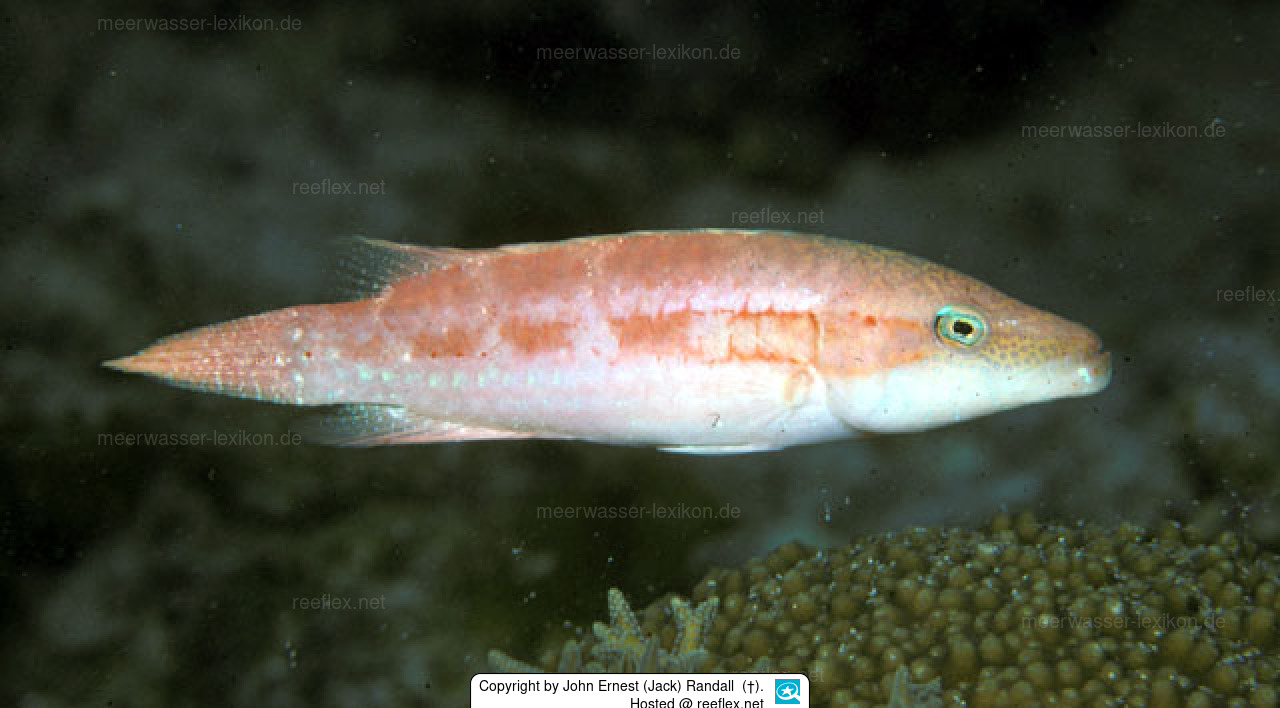Info
(Günther, 1862)
FishBase:
"Found in coastal to outer reef habitats; juveniles often in crinoids or soft corals at moderate depths.
Probably occurring deeper than normal diving depths.
Occurs among dense cover of coral rubble or algae .
Feeds mainly on fishes, shrimps and other crustaceans. K
nown in outer reef lagoons to deep slopes with other invertebrates.
Females swim in small groups."
Synonyms:
Cheilinus orientalis Günther, 1862
Cheilinus rhodochrous Günther, 1867
Oxycheilinus rhodochrous (Günther, 1867)
Classification: Biota > Animalia (Kingdom) > Chordata (Phylum) > Vertebrata (Subphylum) > Gnathostomata (Superclass) > Pisces (Superclass) > Actinopterygii (Class) > Perciformes (Order) > Labroidei (Suborder) > Labridae (Family) > Oxycheilinus (Genus) > Oxycheilinus orientalis (Species)
Jumping guard
A jumping guard prevents (nocturnal) fish from jumping out.
Wrasses, blennies, hawkfishs and gobies jump out of an unprotected tank in fright if their night rest is disturbed, unfortunately these jumpers are found dried up in the morning on carpets, glass edges or later behind the tank.
https://www.korallenriff.de/en/article/1925_5_Jump_Protection_Solutions_for_Fish_in_the_Aquarium__5_Net_Covers.html
A small night light also helps, as it provides the fish with a means of orientation in the dark!
FishBase:
"Found in coastal to outer reef habitats; juveniles often in crinoids or soft corals at moderate depths.
Probably occurring deeper than normal diving depths.
Occurs among dense cover of coral rubble or algae .
Feeds mainly on fishes, shrimps and other crustaceans. K
nown in outer reef lagoons to deep slopes with other invertebrates.
Females swim in small groups."
Synonyms:
Cheilinus orientalis Günther, 1862
Cheilinus rhodochrous Günther, 1867
Oxycheilinus rhodochrous (Günther, 1867)
Classification: Biota > Animalia (Kingdom) > Chordata (Phylum) > Vertebrata (Subphylum) > Gnathostomata (Superclass) > Pisces (Superclass) > Actinopterygii (Class) > Perciformes (Order) > Labroidei (Suborder) > Labridae (Family) > Oxycheilinus (Genus) > Oxycheilinus orientalis (Species)
Jumping guard
A jumping guard prevents (nocturnal) fish from jumping out.
Wrasses, blennies, hawkfishs and gobies jump out of an unprotected tank in fright if their night rest is disturbed, unfortunately these jumpers are found dried up in the morning on carpets, glass edges or later behind the tank.
https://www.korallenriff.de/en/article/1925_5_Jump_Protection_Solutions_for_Fish_in_the_Aquarium__5_Net_Covers.html
A small night light also helps, as it provides the fish with a means of orientation in the dark!







 Dr. John Ernest (Jack) Randall (†), Hawaii
Dr. John Ernest (Jack) Randall (†), Hawaii















